It might surprise you to know that your current audio interface has untapped potential. By investing in a high-quality external mic preamp and headphone amp, you can actually optimise your current audio interface and level-up your studio without spending money on a new, expensive audio interface that is complicated to setup and feels alien to use.
With just a few connections, you can connect your audio interface to our Camden EC1 and drastically improve your conversion quality, preamp performance, and headphone monitoring of your existing audio interface.
Wondering how that is even possible? Well, in this blog, we're going to explain!

Audio Interfaces range wildly in performance, capability, and price - the cheapest can be as little as £30 ($40 USD) whilst the most extravagant can be well over £10,000 ($14,000 USD). And there’s countless reasons for this. The most popular include:
Super low-cost audio interfaces will have entry-level feature sets in all aspects, whilst high-end offerings have all the bells and whistles to achieve elite-performance (with a price tag to match!)
But, the vast majority of interfaces in the middle (from £149/$199 - £799/$999) typically feature very similar A/D and D/A conversion performance, however their analogue stages (preamps, DI, line stages) are often slight, incremental improvements and will not give you the massive leap-up in sound quality you may be expecting.
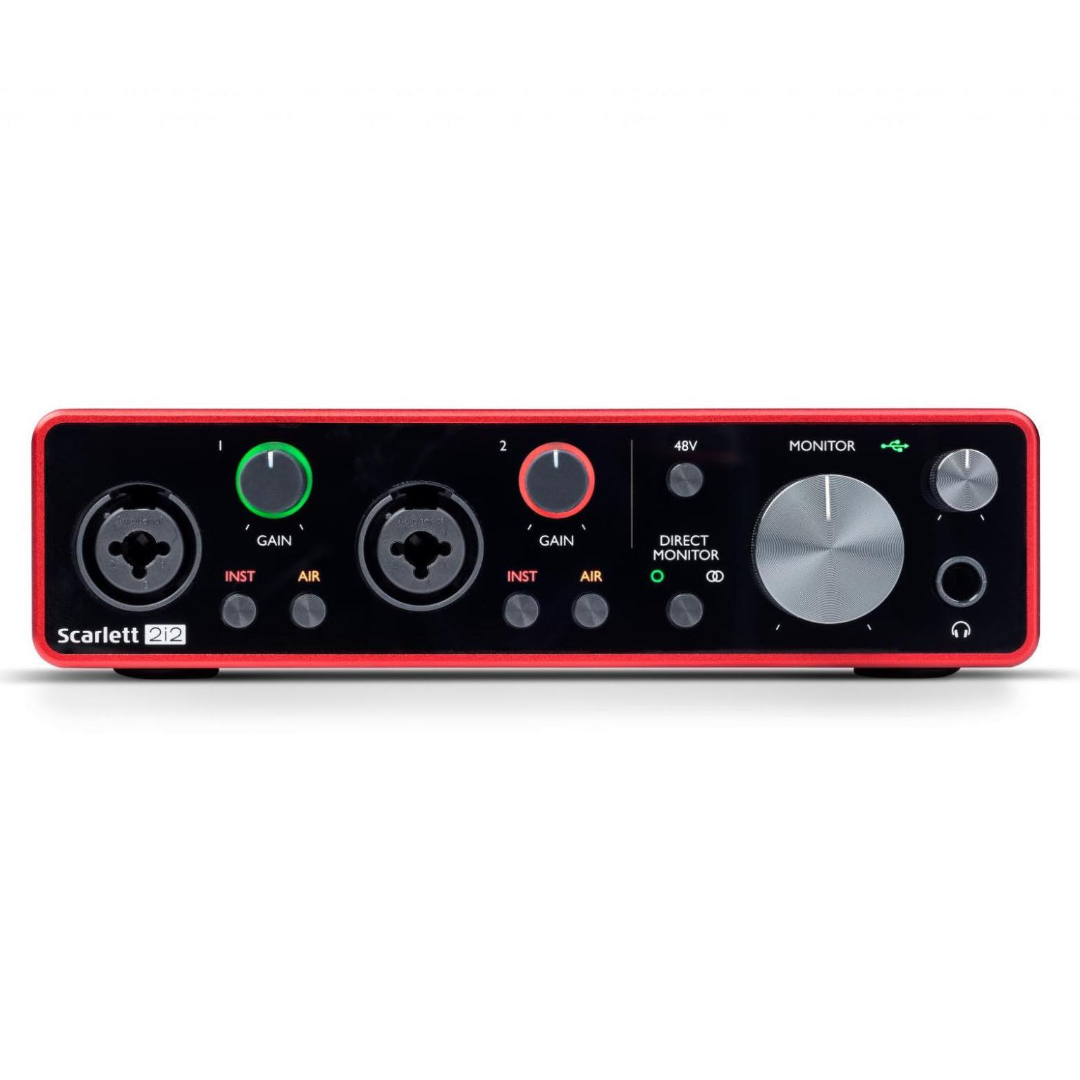
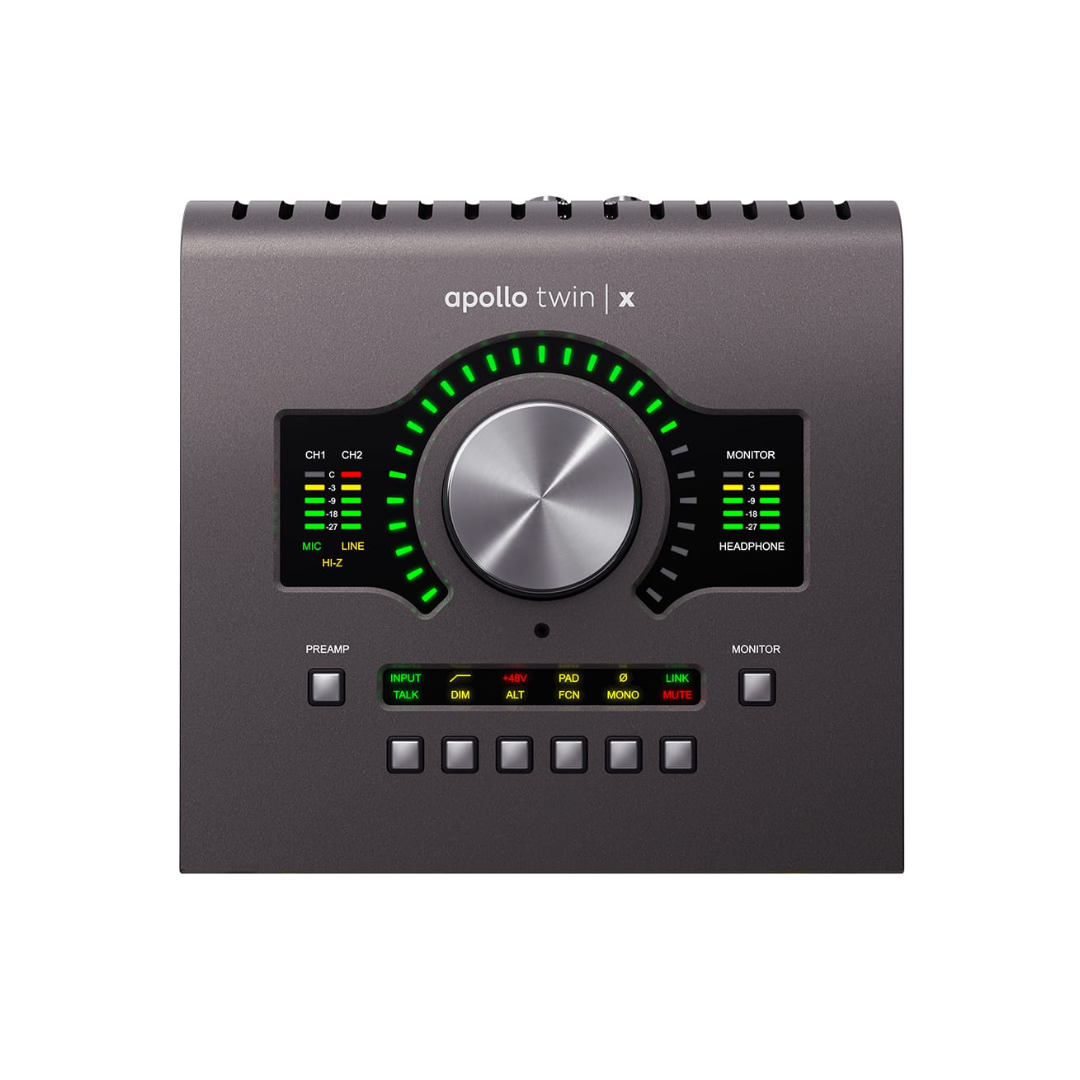
What does this mean?
Unless you specifically need a higher USB/Thunderbolt channel count or advanced Software features, a $599+ interface, may not be a significant upgrade over a $199 entry-level interface... Their internal conversion is probably very similar and whilst the $599 interface may have slightly better preamps and headphone outputs, it's unlikely to be enough to make a massive impact to your next record!
Instead, if you have $599 to spend on a new interface, a more worthwhile investment could be an external preamp like Camden EC1. Featuring its own preamp and headphone amplifier, with just a few connections, you can make your current audio interface perform at a level far above the other interface you've been eyeing-up.
Best of all, Camden EC1 performs at such a high-level, you can continue to use and enjoy it when the time comes for the next studio upgrade. It's also all analog and won't become obsolete next time apple bring out a new computer - unlike that $599 interface...
Wondering how this all works? We will explain!
Do you find your self cranking the gain control up high to get useable levels for recordings?
You would be forgiven in these circumstances if you thought the preamp was not up to the task, however the truth is that preamps built-in to audio interfaces actually perform very well at low gains, but as the preamp gain is increased, non-linear THD (Total-Harmonic Distortion) is added onto the signal to create unpleasant and harsh sounding recordings.
Additionally, the noise floor which is low at low gain settings, will start to suffer at high gain. This is more apparent when using SM7B, RE20, ribbon and other low-output microphones that need plenty of preamp gain to operate correctly.
What about in-line mic boosters?
A recent innovative solution to this problem is an in-line mic booster. These devices use phantom power from the interface to add gain to the microphone signal and allow the interface’s preamp gain to be used at a lower setting - where it performs better.
These are elegant devices however they have their own noise and distortion performance and when they are used in conjunction with the audio interface, both devices will still colour your recordings and will have a higher noise floor than if you were just using the interface preamp by itself - which is often a big surprise to many users who buy these devices in hope they are the magic bullet.
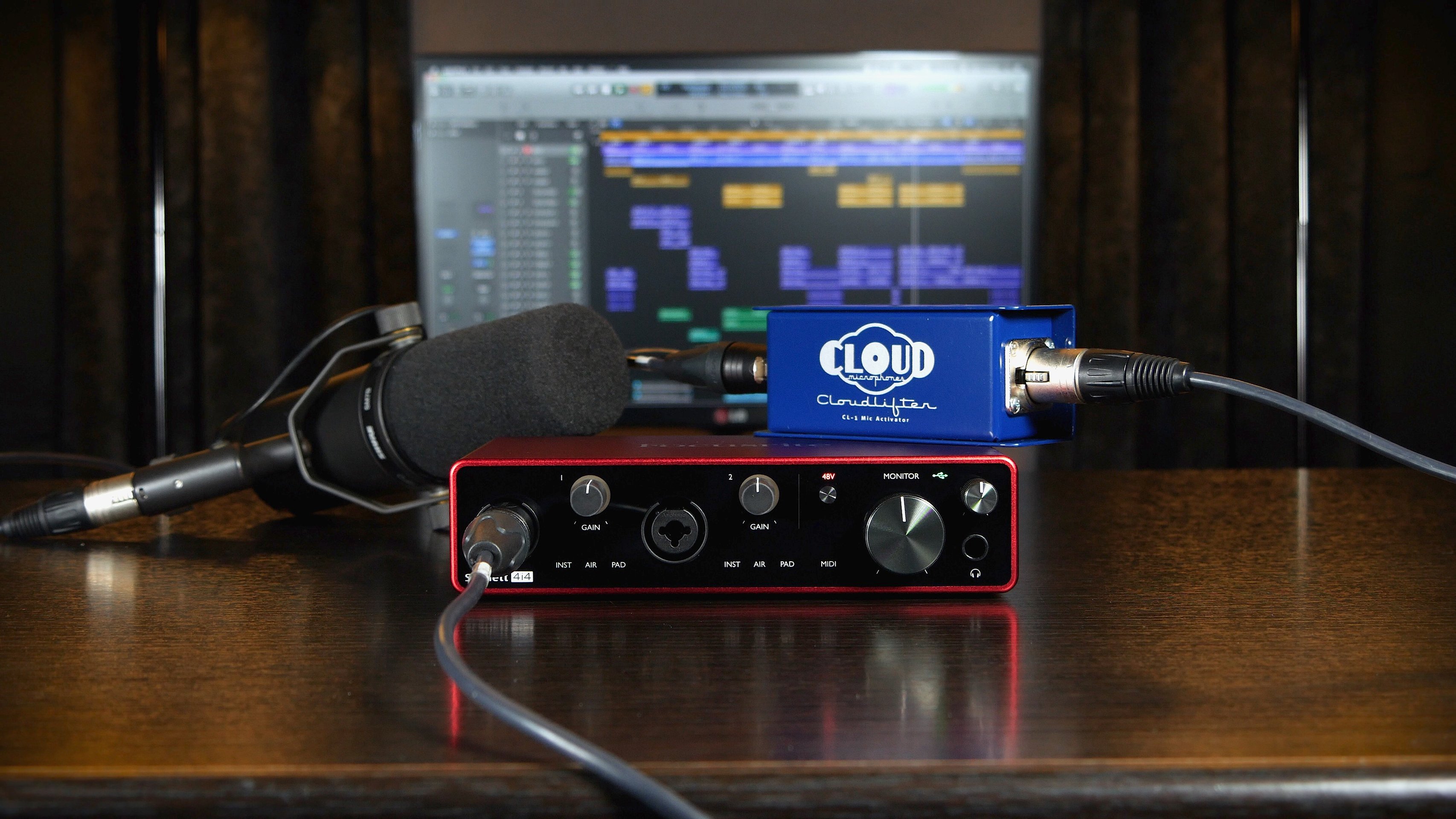
By placing Camden EC1 in front of your interface's built-in preamp with a few simple connections, you can achieve even better performance from your audio interface. This is because the interface’s preamp gain can be set to minimum - where it performs at its best, whilst Camden EC1’s award-winning preamp does all of the heavy lifting. Camden EC1 can then apply up to 68.5dB of Gain onto the signal with clean, and transparent performance.
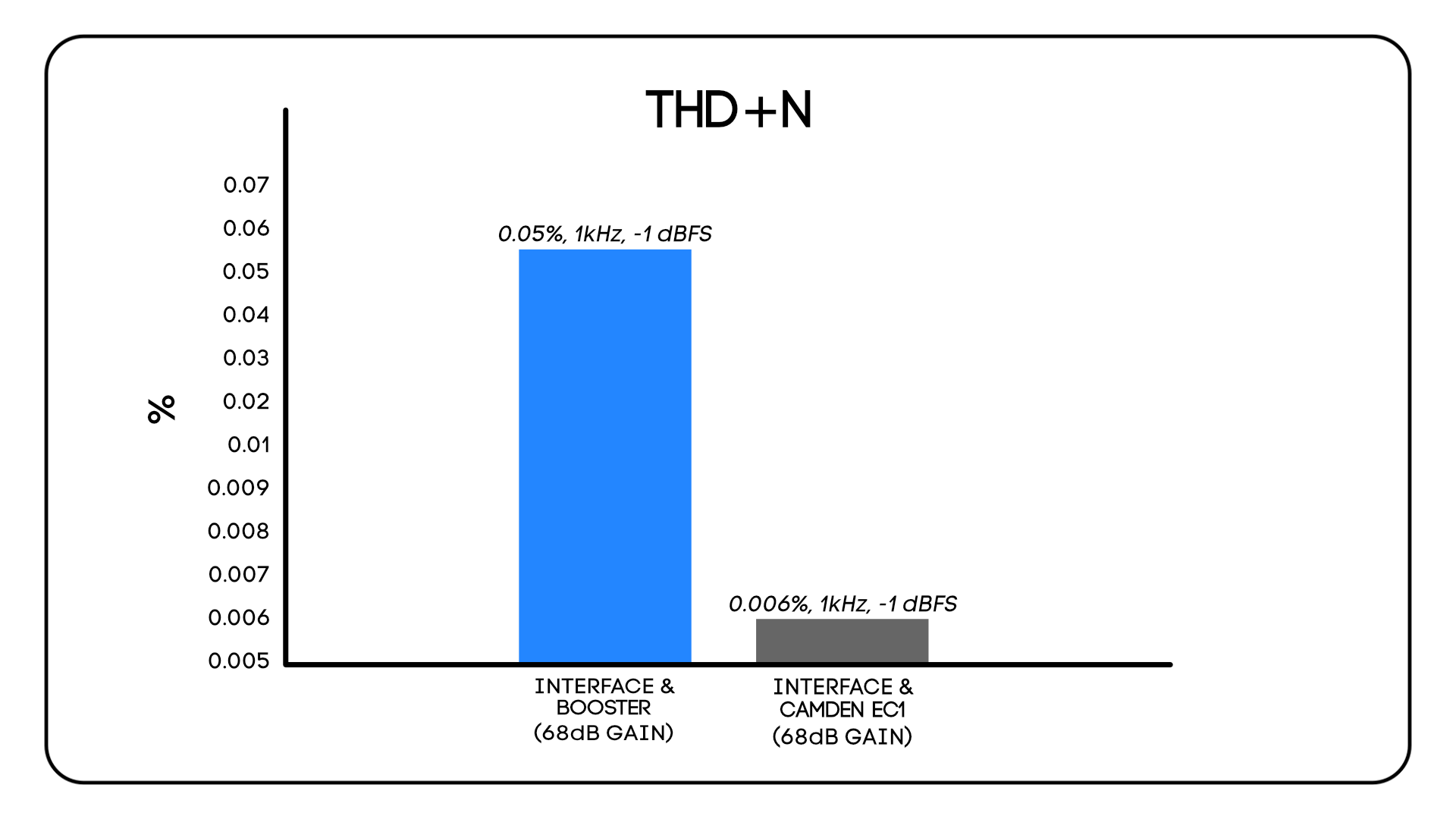 THD+N = 0.05% vs 0.006%
THD+N = 0.05% vs 0.006%
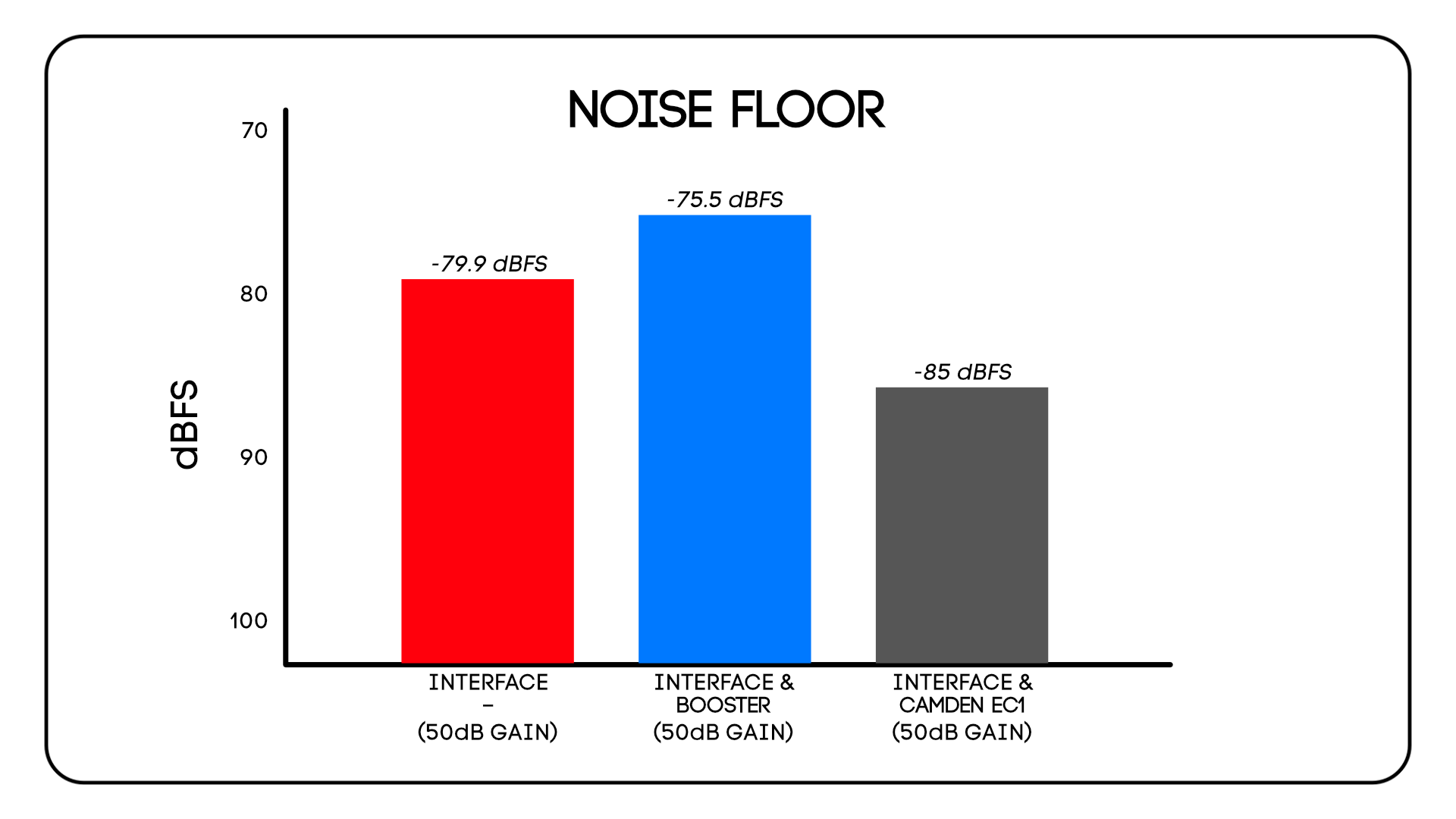 Noise Floor = -75.5dBFS vs -85dBFS
Noise Floor = -75.5dBFS vs -85dBFS
By our calculations and measurements, our Camden preamps are the cleanest and most transparent preamps on the market and probably the best preamps available for capturing clean and uncoloured audio.
But why does that matter? Why does a clean and transparent signal make for a better audio recording?
In this video, we dive into our technical specifications and explain why these figures matter when it comes to capturing clean and pristine audio.
Do you find that the headphone output of your audio interface sounds quiet and uninspiring?
Headphone amplifiers built into interfaces are often one of the lesser performing aspects of their analogue design. These built-in headphone amps can sometimes sound harsh and uninspiring, and often lack the power required to drive certain headphones cleanly. Headphone amps are too often an under-appreciated aspect of the signal chain. The relationship between headphones and the headphone circuit driving them is different from a normal line-level output as headphone outputs have to drive a wide range of impedances and a headphone amp that performs well with one set of headphones, will perform radically different with another set with a different impedance.
In order to get a clean, wide, and full sounding headphone output irregardless of the headphones being used, you need to use a headphone amp that has plenty of clean power and a flat frequency response into any load.
Upgrade headphones or headphone amp?
A common mistake a lot of people people make when they are looking to upgrade their headphone monitoring is to replace their headphones with more 'professional' ones in the hope that this will improve the quality of their monitoring environment.
The truth is that new headphones may not make the impact you are hoping for. If your audio interface is struggling to power the low-impedance headphones you have at the moment, higher rated headphones will likely suffer even more and will sound lifeless, unpowered, and coloured. As headphone impedances are increased, the amount of voltage and wattage required to power them rises significantly. The quality of a signal path is only as strong as its weakest link and so if the headphone output is underpowered with low impedance headphones, it will never provide the output required to make a new set of high-impedance headphones shine.
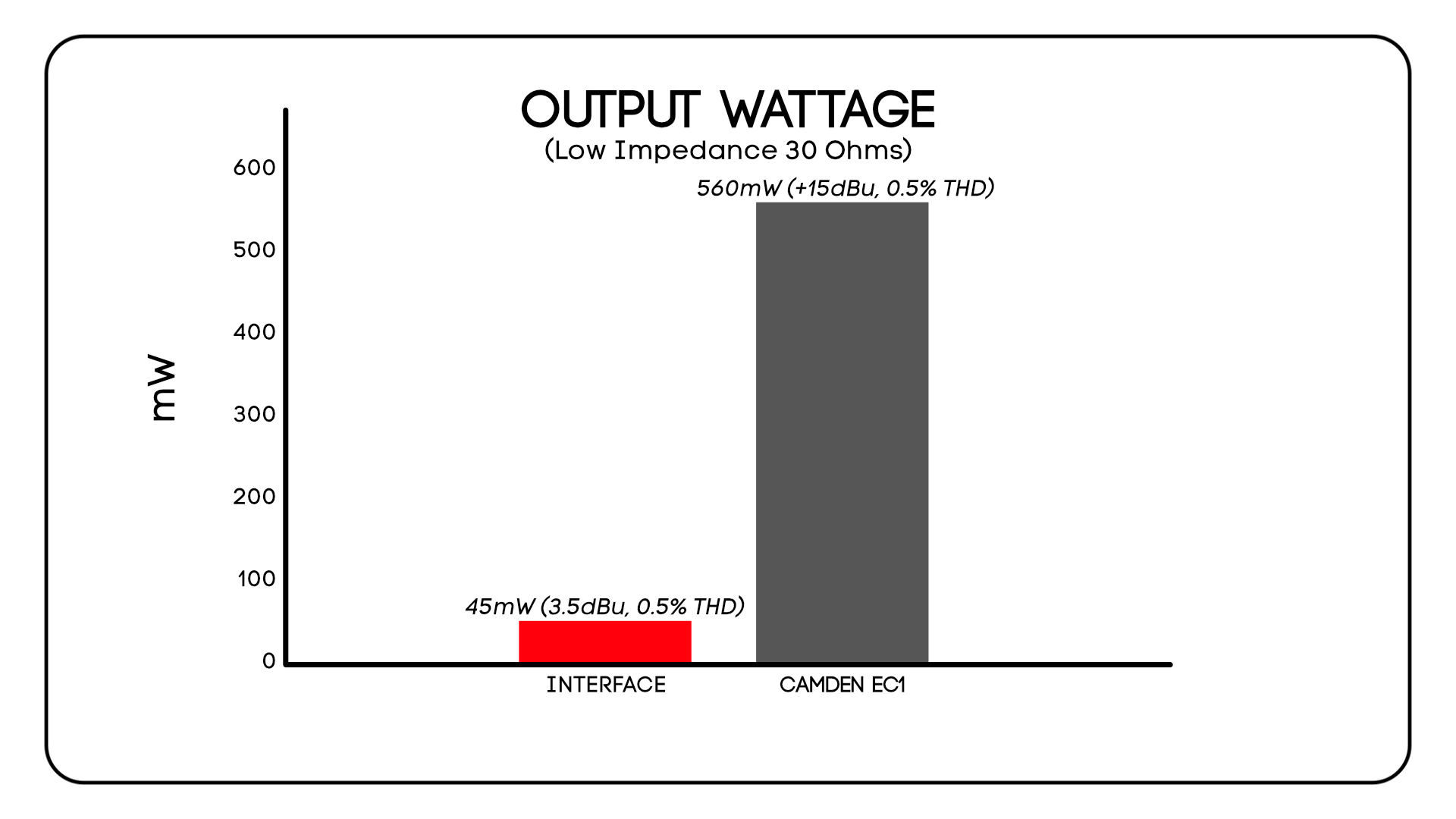
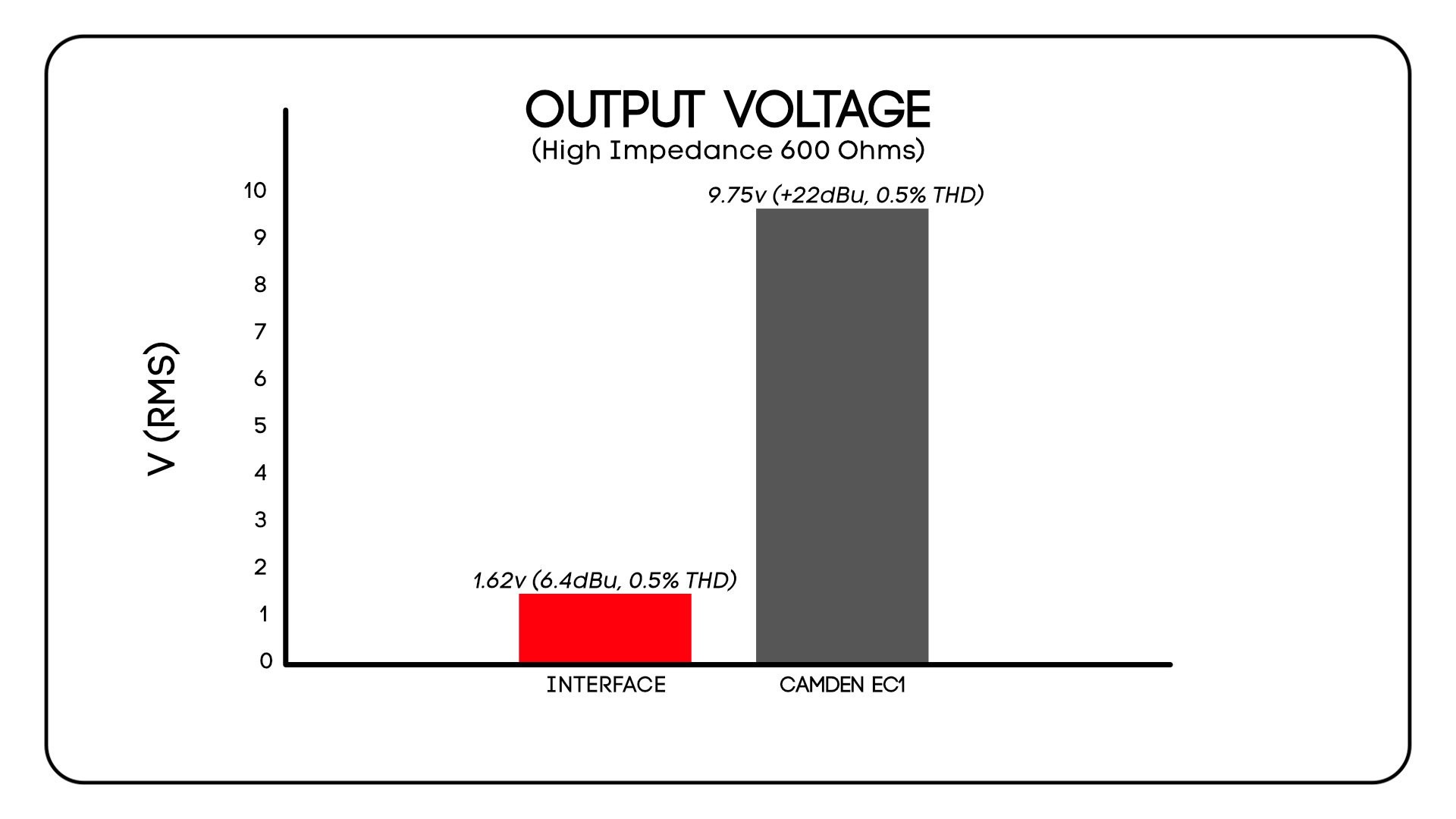
Using Camden EC1 in your studio gives you more than just an elite-performance preamp and headphone amp. You also get more added benefits ranging from a link output for reamping to our acclaimed analogue saturation control that colours and applies vintage tone to your recordings.
| Audio Interface | Audio Interface + Mic Booster | Audio Interface + Camden EC1 | |
| Clean performance at low gain | ✅ | ✅ | ✅ |
| Clean performance at mid gain | ❌ | ✅ | ✅ |
| Clean performance at high gain | ❌ | ❌ | ✅ |
| Low Noise for maximum dynamic range | ❌ | ❌ | ✅ |
| 48v for condenser microphones | ✅ | ❌ | ✅ |
| Inaudible distortion | ❌ | ❌ | ✅ |
| High-class Instrument DI | ❌ | ❌ | ✅ |
| Mojo analogue saturation | ❌ | ❌ | ✅ |
| Link output for re-amping | ❌ | ❌ | ✅ |
| Multiple preamp outputs | ❌ | ❌ | ✅ |
| Advanced routing with C.A.S.T. | ❌ | ❌ | ✅ |
| Analogue personal monitoring facility | ❌ | ❌ | ✅ |
| Sufficient current for low impedance headphones | ❌ | ❌ | ✅ |
| Sufficient voltage for High impedance headphones | ❌ | ❌ | ✅ |
Receive the latest product updates directly from the team.


Cranborne Audio, Harvest House, Cranborne Rd, Potters Bar, EN6 3JF
Privacy Policy | Warranty Policy